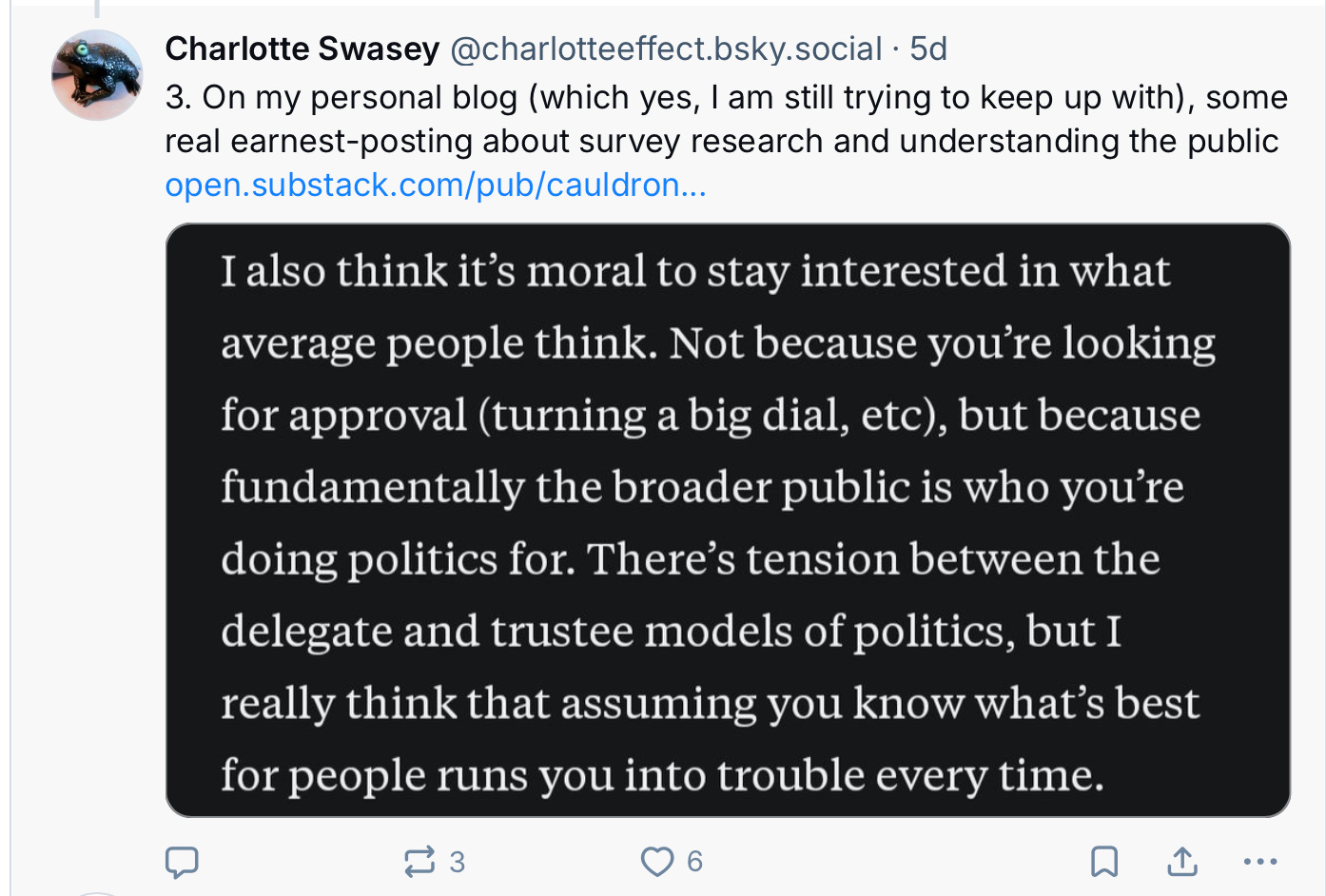Are Democrats "talking too much" about left-wing issues?
A wholistic review suggests analysts are drawing conclusions the data do not support
The most dangerous graphs are often the simplest. Clean axes, clear labels, a story that seems to leap right off the page (or browser). Sometimes, this is good — the product of a well-crafted data visualization process. But often, the simplicity obscures more than it clarifies. A compelling chart can be the visual form of lying with statistics.
A new centrist think tank in Washington was started, to great media applause, last week. The Searchlight Institute, according to its founder Adam Jentleson, will “hold up a mirror to the [political] influence industry.” This adversarial influencer is, broadly speaking, the ideological left: In an interview with The New York Times, Jentleson says “The folks who are most to blame about Trump are the ones who pushed Democrats to take indefensible positions.” He claims the ACLU and Center for American Progress are responsible for Kamala Harris losing in 2024 because they incentivized the party’s leaders to move too far to the left.
But I’m not writing about Searchlight because of its political ideology, but because one of its big products is polling and analysis of polling — something of a foundational topic for this newsletter. I do not know the pollsters at Searchlight personally, but it looks like they’re doing fine, methodologically sound work. The team has published a decent set of data principles on its website. The top pollster says something I think every reader of this newsletter should agree with:
However, these principles are only worth something if leadership is devoted to them — something I’m not so sure about in this case, as we’ll see (plus Searchlight has also been pretty dismissive/rude to critics on social media, which is not exactly confidence-inspiring from a truth-seeking perspective). To really safeguard the principle of “Measure first, act second,” you’d need a think tank devoted to the practice of polling itself. It is hard to believe that an organization devoted to a specific political cause (proving that the Democratic Party has gone too far to the left) will be a neutral arbiter of what the public thinks.
So I’m here to look at Searchlight’s new work (which is getting a lot of attention) from the point of view of a neutral, third-party polling expert who has spent a decade figuring out what certain data points can (and cannot) actually tell us about politics.
Here’s the data that got me to write up this post in the first place: On Sept. 22, Searchlight published a new survey showing how voters perceive how much the Democratic and Republican parties focus on various issues. The results were pretty predictable to anyone who pays attention to polling: Voters say Democrats are focusing too much on climate change and LGBTQ issues, relative to the issues voters want them to focus on (health care, jobs, prices). Jentleson touted the results as evidence that Democrats “just shouldn’t talk about climate change.”
And on social media, a lot of people used the poll to argue that the Democrats are “talking too much about LGBTQ.”
I get the appeal of this interpretation. After a year of post-election autopsies and endless debates about Democratic messaging, here was data that seemed to cut through the noise with mathematical precision. The charts are clean, the methodology appears sound, and the implications feel obvious.1
But as someone who’s made a career out of interrogating polling data — and who’s seen plenty of “obvious” interpretations turn out to be incomplete (some of them of my own making) — I can’t help but think people are rushing to judgment here.
Looking at a lot of different data, not just polls, it’s clear this survey is being packaged and interpreted in ways that, while not necessarily wrong, strike me as oversimplified and misleading. Specifically, you cannot conclude from the prioritization matrix for one party alone that Americans are voting against it because it is “focusing too much” on one issue or the other. In this piece, I explain what’s wrong with this approach.





